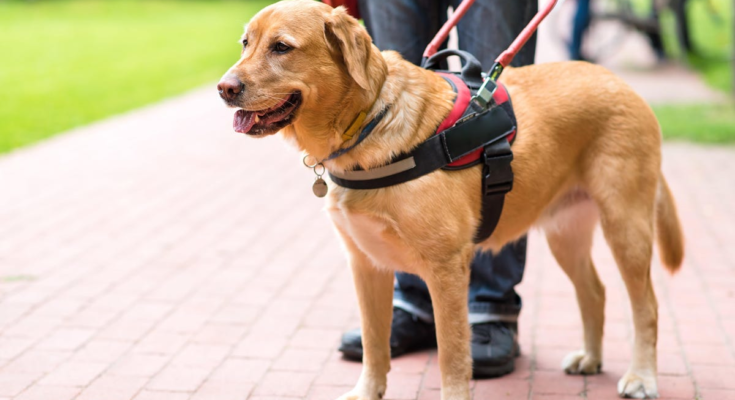
We probably all consider our dogs essential to our day-to-day lives and wish we could take them everywhere. Many dogs actually do have real jobs and go to work with their humans every day, whether they’re herding livestock, aiding search-and-rescue teams, or providing comfort to hospital patients. But not all working dogs are service dogs, which have specific legal rights in public spaces.
Here’s the difference between service dogs, therapy dogs, and the other goodest working boys and girls.
What is a service dog?
Service dogs provide a specific type of aid defined by the Americans with Disabilities Act (ADA), meaning they are formally trained to perform tasks in support of people with a “physical, sensory, psychiatric, intellectual, or other mental disability.” For example:
- Guide dogs for people who are blind or visually impaired
- Signal dogs that alert people who are deaf to sounds
- Medical support dogs that protect or seek help during a seizure or low blood sugar episode
- Psychiatric support dogs that assist handlers with mental health conditions like post-traumatic stress disorder
- Mobility dogs that assist humans using wheelchairs or mobility aids
- Sensory signal dogs that assist people with autism
A service dog’s tasks must be directly related to their human handler’s disability. They are considered to be working dogs rather than pets—and under the ADA, they have the right to full access to public spaces where other animals are not allowed. That’s why you may see service dogs in restaurants, on planes, and in pet-unfriendly housing and hotels, fee-free.
Note that the ADA does not require service animals to wear special vests or tags that identify them, so that (or the lack thereof) does not necessarily signal a dog’s job.
What is a therapy dog?
Therapy dogs provide comfort to people in certain settings, like hospitals, clinics, schools, therapy offices, and nursing homes on a volunteer basis. They may also be brought in to support people following traumatic events or after natural disasters. In some places, therapy dogs are also allowed in courthouses to aid those going through legal or trial proceedings.
Therapy dogs and similar support animals are not trained to do a specific task for a specific person with a disability, so they are not afforded the same protection under the ADA. They are, however, expected to handle the demands of their environment, such as unusual sounds and being touched by strangers.
While there are organizations that train and certify therapy dogs, the process isn’t standardized. Public access may be limited, and they may be subject to standard pet fees. Note that emotional support animals, while comforting to their owners, are pets, not service dogs with public access rights.
What is a working dog?
As mentioned, plenty of dogs have other jobs that aren’t therapeutic in nature. Search-and-rescue dogs, explosive detection dogs, and herding dogs are a few examples. While these dogs do have very focused tasks to accomplish while at work, they also are not considered service animals under the ADA.



